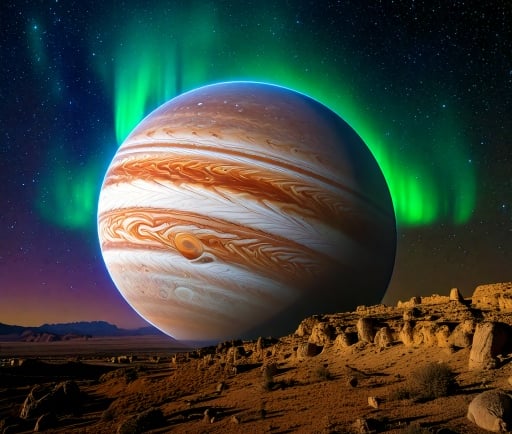The Magnificence of Jupiter's Auroras: A Mix of Charged Particles


Understanding Jupiter's Magnetic Field
Jupiter, the largest planet in our solar system, possesses an incredibly strong magnetic field. This magnetic field extends far into space and is responsible for funneling charged particles within its magnetosphere toward the planet's poles. Unlike Earth, where such interactions result in comparatively subtle auroras, the effects on Jupiter are nothing short of magnificent.
The Magnetosphere and Charged Particles
Jupiter's powerful magnetic field captures high-energy particles from the solar wind as well as cosmic rays. These charged particles are funneled by the planet's magnetic forces, guiding them toward the polar regions. Upon reaching the atmosphere, these particles collide with atmospheric gases, primarily hydrogen and helium, producing stunning displays of light. This interaction leads to some of the brightest and most colorful auroras in the solar system.
The Dance of Auroras: Northern and Southern Lights
The auroras on Jupiter manifest as beautiful bands of light that can be observed in both the northern and southern hemipheres of the planet. These captivating displays are often characterized by vibrant hues of red, green, and purple. The phenomenon is similar to the Northern and Southern Lights on Earth, but on Jupiter, they are vastly more intense. The sheer scale of these auroras can be compared to the size of the planet itself — a testament to the dynamic interactions occurring within its atmosphere.
In conclusion, Jupiter's magnetic field plays a crucial role in generating its extraordinary auroras. The magnetosphere channels charged particles towards the poles, leading to breathtaking interactions with the atmosphere. Observing these phenomena not only enhances our understanding of Jupiter's atmospheric dynamics but also reminds us of the beauty found in the vastness of our universe.
